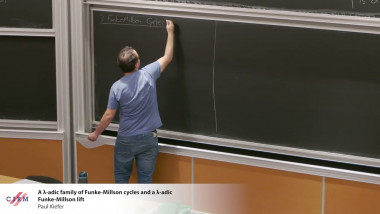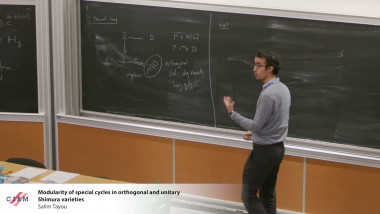
A $\lambda$-adic family of Funke-Millson cycles and a $\lambda$-adic Funke-Millson lift
De Paul Kiefer

Modularity of special cycles in orthogonal and unitary Shimura varieties
De Salim Tayou
Apparaît dans la collection : Jean-Morlet Chair 2020 - Conference: Diophantine Problems, Determinism and Randomness / Chaire Jean-Morlet 2020 - Conférence : Problèmes diophantiens, déterminisme et aléatoire
It is well known that the every letter $\alpha$ of an automatic sequence $a(n)$ has a logarithmic density -- and it can be decided when this logarithmic density is actually adensity. For example, the letters $0$ and $1$ of the Thue-Morse sequences $t(n)$ have both frequences $1/2$. The purpose of this talk is to present a corresponding result for subsequences of general automatic sequences along primes and squares. This is a far reaching of two breakthroughresults of Mauduit and Rivat from 2009 and 2010, where they solved two conjectures by Gelfond on the densities of $0$ and $1$ of $t(p_n)$ and $t(n^2)$ (where $p_n$ denotes thesequence of primes). More technically, one has to develop a method to transfer density results for primitive automatic sequences to logarithmic-density results for general automatic sequences. Then asan application one can deduce that the logarithmic densities of any automatic sequence along squares $(n^2){n\geq 0}$ and primes $(p_n)_{n\geq 1}$ exist and are computable. Furthermore, if densities exist then they are (usually) rational.
